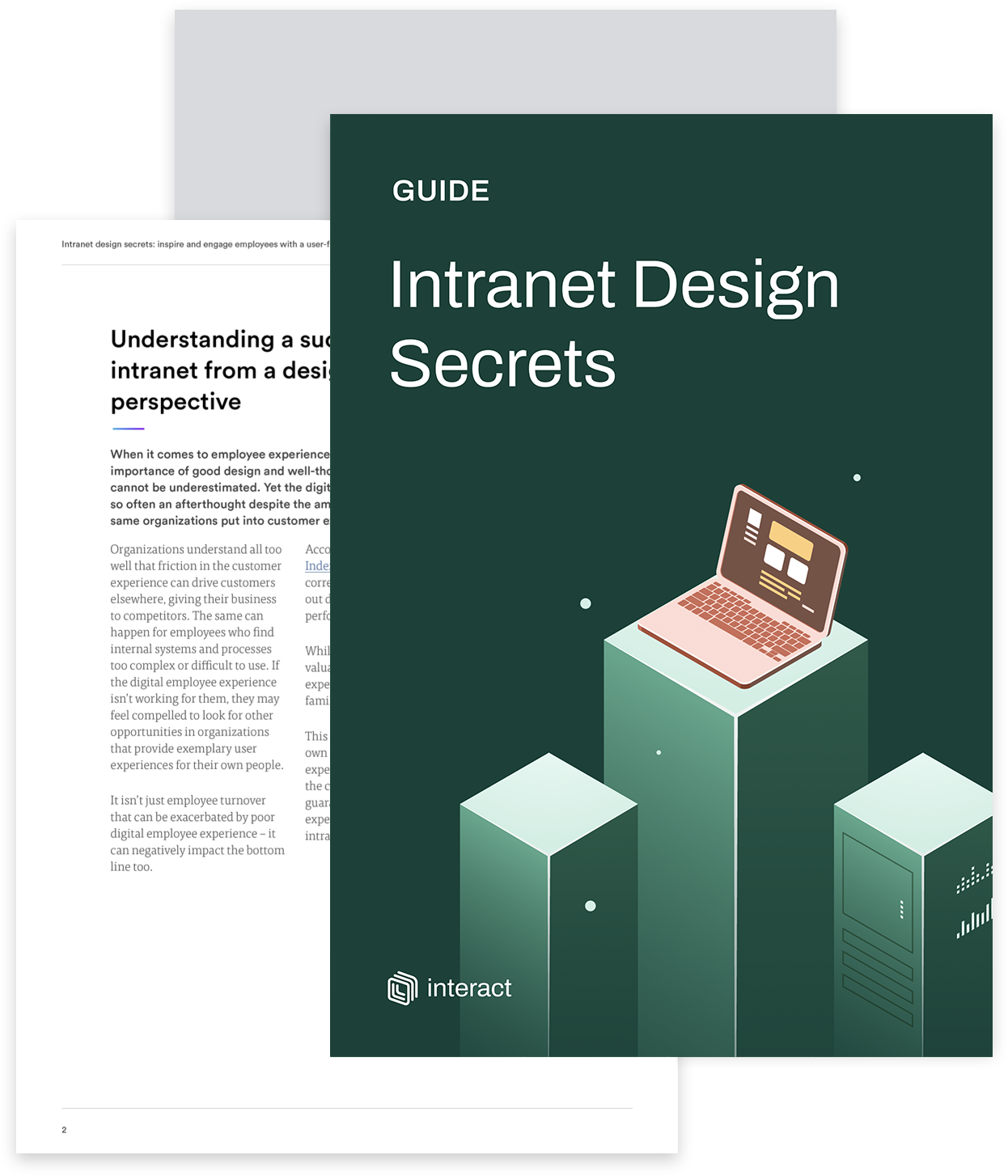Through a combination of algorithms and data, digital personalization has transformed how companies recognize and communicate with consumers online. Today, new technologies and strategies are making segmentation and personalization easier for internal communications too, even when resources are limited. This article explores how to increase digital personalization in the workplace.
If you’ve ever found yourself making an unexpected online purchase or streaming an obscure TV show, you may have digital personalization to thank.
Amazon’s recommendation engine surfaces related products based on your activity. Netflix offers new shows and movies in its “Because you watched” tool. They’re both well-known examples of how companies personalize our online experiences.
Occasionally – as with the recent Amazon adverts for a guitar pedal and some white vinegar – the AI gets it wrong. Mostly, however, these examples of personalization are beneficial because consumers get to see more of the things they’re interested in. For companies using it to advertise, they can target their adverts more effectively.
Digital personalization and behavioral targeting have become so enmeshed in our lives that consumers now expect it as standard. According to McKinsey, over 70% of consumers expect it, and personalization has been shown to increase engagement and brand loyalty.
Confused about the difference between the internet and an intranet? Read this article on Intranet vs Internet here.
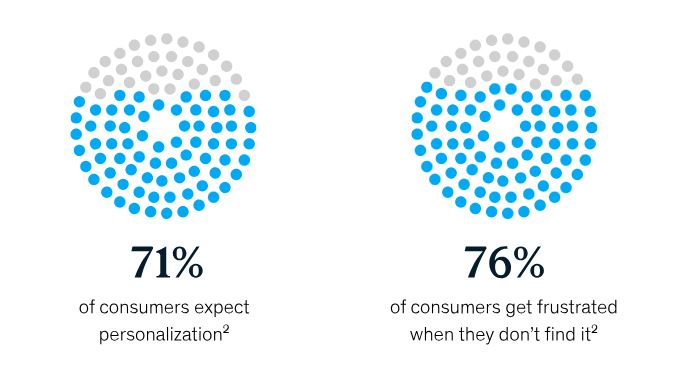
Source: McKinsey & Company, The value of getting personalization right—or wrong—is multiplying
Online, we are the center of an “internet of me”.
At work, however, the communications we receive from our employers don’t tend to match up. All-company emails and generic policy announcements can feel dry compared to the dynamic, targeted content we receive every time we click into a new app. And, for internal communications professionals, the ability to create personalized digital experiences and communications has been limited.
Intranet Design Secrets
Even if your organization has a modern intranet, personalized comms and automated content suggestions may feel like a distant dream if it’s not well implemented. The tips below offer some ways to think about setting an employee segmentation and personalization strategy for your workplace comms.
Why is digital personalization important?
Personalization has set high expectations for our digital experiences.
We’ve progressed from having websites simply remembering our login details to tailored product suggestions and targeted remarketing. Email campaigns don’t just address us by name, they appeal to our specific interests and remember our purchases.
We bring those preferences and expectations with us when we come to work each day too. For internal communicators and people leaders, this results in a more demanding audience.
Each time an employer posts on the intranet or sends an email, they are marketing to this audience. But, instead of addressing employees as individuals or members of distinct groups, many organizations do not have the technologies or strategies to create anything more nuanced than a one-size-fits-all approach.
This lack of digital personalization is understandable, but it has a huge impact on a business and its workforce. With poor communication reportedly costing up to $12,506 per employee per year, this gap has a high cost.
Ultimately, this arises because we bring high expectations to work but the failure to segment internal audiences and tailor messaging doesn’t meet these demands, leading to lower engagement and worsening communication.
McKinsey’s research found that over three-quarters of online consumers get frustrated with a lack of personalization. There’s no reason to believe this is any less true within the workplace.
How do I personalize internal communications?
Not all organizations have access to the complex tools or resources required to execute a fully structured, personalized internal marketing strategy. However, even simple, small tactics can – if deployed correctly – have a measurable impact on engagement levels.
1: Understand your audiences
The foundation of personalization is demographic and behavioral data—understanding who your audiences are before you target them.
Depending on your organization and its communications software, the data you can access and evaluate will vary.
For most of us, the basics will be available; demographic data such as working locations, department, role, years of employment, and level of seniority are a good place to start.
If you utilize an intranet platform with in-depth analytics, you can get a deeper understanding of audience behaviors.
- What are employees reading and engaging with?
- What types of content or topics are most interesting?
- Which channels gain the most engagement?
- What are people searching for and where are the content gaps (i.e., search terms with no active content supporting them)?
- Which departments or individuals are most active and which are more difficult to reach?
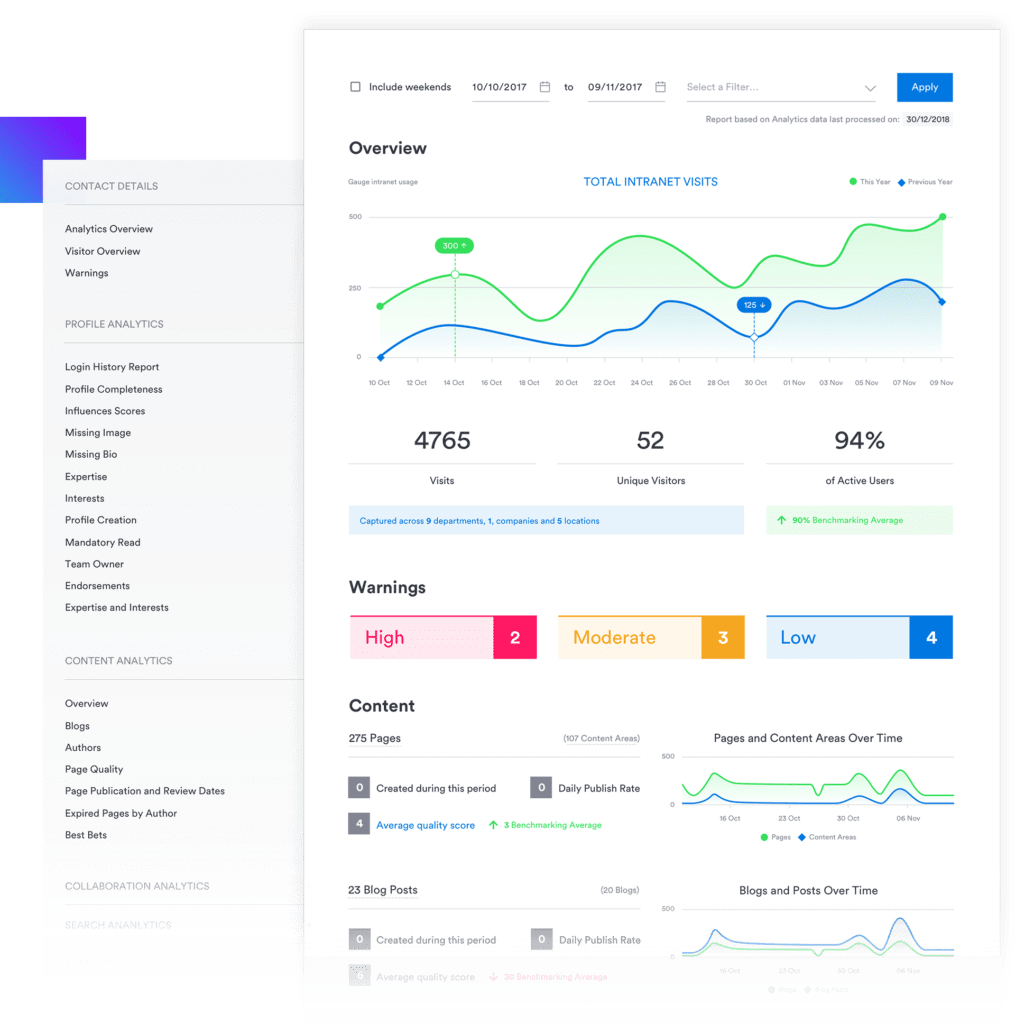
How can you personalize communications using intranet analytics data? One way is to understand who you aren’t reaching and then test and learn until it improves.
For example, if you have an intranet page that is applicable to all departments, but which only 50% of people visit, try analyzing the traffic. If all the visitors come from desktops rather than mobiles, the content may be accessible solely to office-based staff. Adding more options for mobile or digital signage would support a more personalized channel strategy for deskless workers.
Intranet Design Secrets
2: Group employees with similar behaviors or needs
Chances are, you don’t currently have the capacity to individualize every message you send out. If that’s so, creating a small number of segmented campaign groups is the most efficient approach. So, once you understand some of the data around the consumption of existing content, think about grouping employees by persona.
This may be according to their department or function, their office location, their level of seniority or service, even their interests or level of engagement with the business, depending on the data you have available.
For example, consider a ‘Regional Group’ for communication specific to a certain area or location; a ‘Middle Management Group’ for cascading of business information; or simply an ‘Active Interests Group’ for your sports or fitness enthusiasts. All of these can be simple but effective ways to promote upcoming events, deals, or opportunities related to their interests as well as business critical updates.
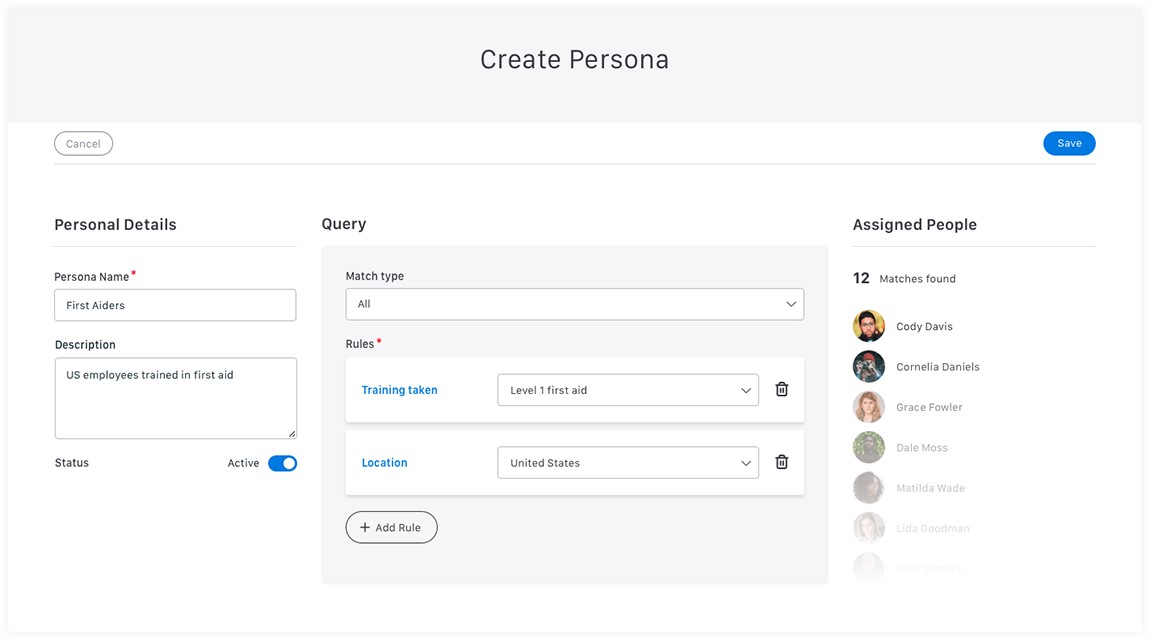
One of the most exciting recent technological developments for internal communicators is geofencing. Geofences allow you to set up an area around a location and then surface hyper-relevant content.
If you have retail employees operating in different stores, for example, customized intranet homepages could welcome them to a store each time they visit. This is a simple but effective way to create highly relevant and personalized digital experiences.
Note: Just because two or more employees have a common behavior or trait doesn’t mean that constitutes a ‘group’. It may be possible to group employees who have ‘Microsoft Excel’ as a skill on their profile, but should you?
Consider the applicability of the segments you create and the scenarios in which you would need to communicate to that group.
3: Understand employee journeys
Companies tailor their external marketing messages according to customer journeys; a new customer making a first-time purchase as a result of an advert on Instagram will receive different content than a returning customer being offered a discount via email, for example.
The same should be true for employees and their interactions with employers.
For example, communications sent to new starters during the pre-boarding and onboarding process should be different from people managers with several years of company experience under their belts. Sending the same message to both groups increases the risk of alienating the first and patronizing the latter.
The employee lifecycle, therefore, is a good starting point for understanding when and why employees interact with communications.
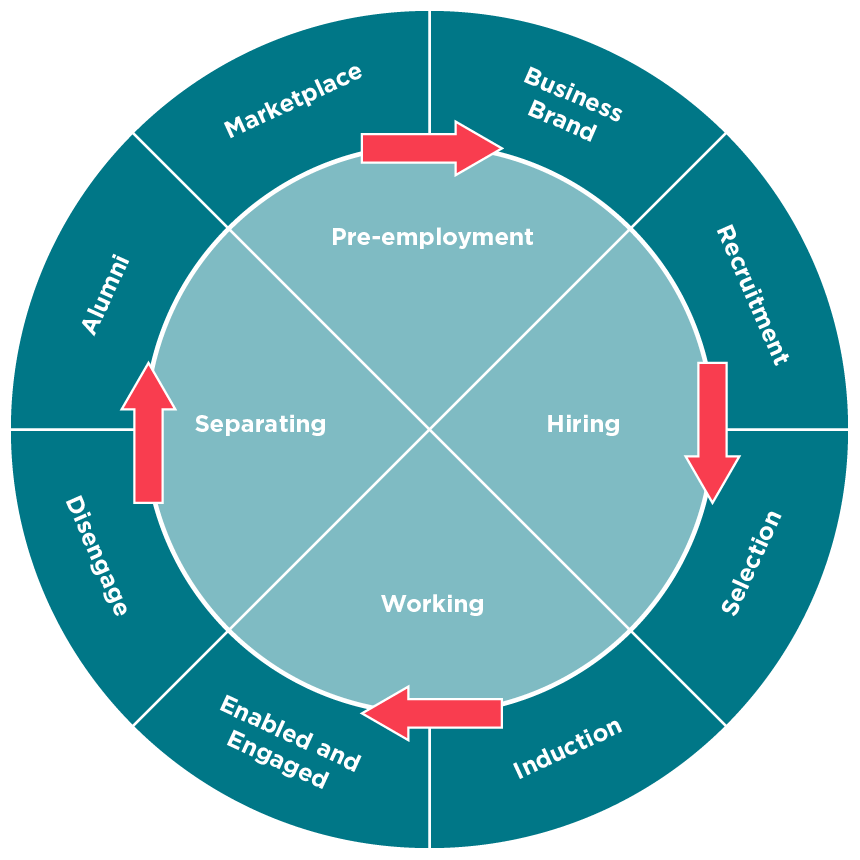
Given the focus on using internal communications to engage employees with the business and their roles, the major touchpoints that have a direct impact on the employee experience are also vital.
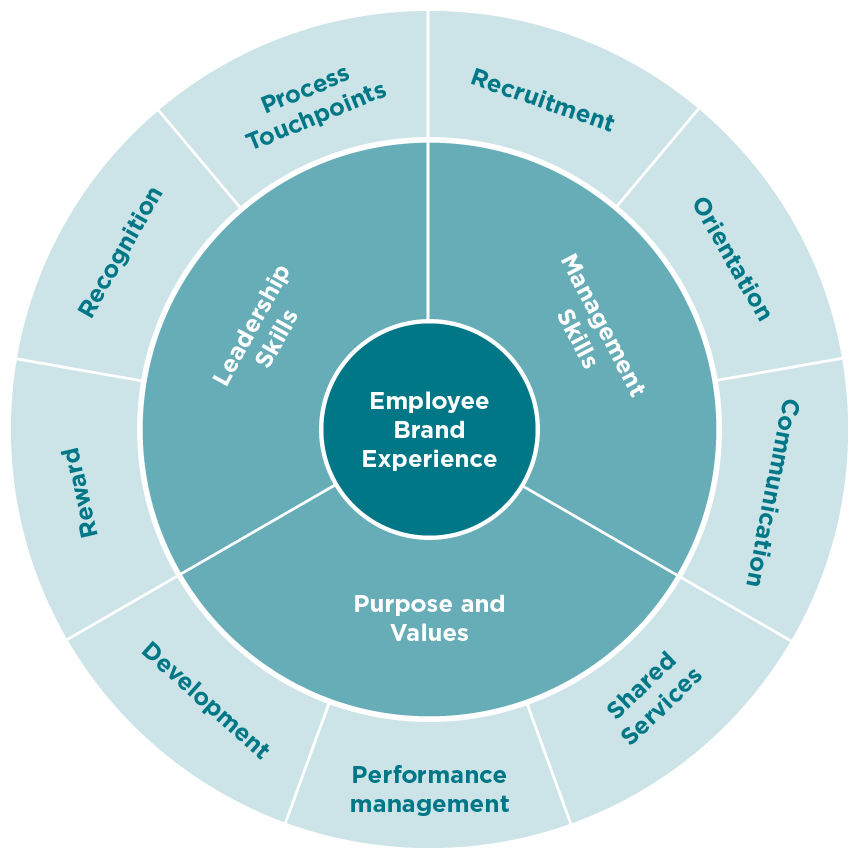
Identify employees’ major touchpoints or triggers from an employee experience and communications perspective.
This will span from seeking information about company policies to the day-to-day processes required to fulfill their roles.
These interactions form internal communications opportunities and offer moments to create examples of digital personalization.
4: Curate a library of customizable responses
Even though IC teams are called upon to repeat certain updates and announcements (open enrollment, for example), the potential for personalizing and changing even stock responses is vast.
Some of the small things you may change for different audiences or times of year include:
- From/sender
- Subject line
- Subject matter/content
- Time zone/time of communication
- Device
- Communication channel
- Call to action
- Job-related
- Links
- Language
- HQ news/regional news
- Tone of content
- Type of content/format
If you have standard communications, such as new starter emails or change communications, create a library of templates for major employee groups. From there you can customize the content accordingly. A customizable “master” document enables you to consider the best ways to make the content digestible for different audiences.
For example, the announcement of a new policy may be in the form of a structured email and attachment, with detailed explanations for senior management. Deskless employees may prefer more interactive content, such as social media posts or videos, however, so your engagement strategy should consider this.
Interact takes this a step further with fully customizable intranet homepages. These intranet landing pages can be tailored to specific employee demographics, teams, or regions.
New starters can view a customized homepage that pushes vital onboarding information, policies, and ‘how-to’ content for the first month of employment; by comparison, the service desk team may see a widget on their intranet homepage displaying open tickets or response targets.
Content is timely, personalized, and aligned to employee needs and wants.
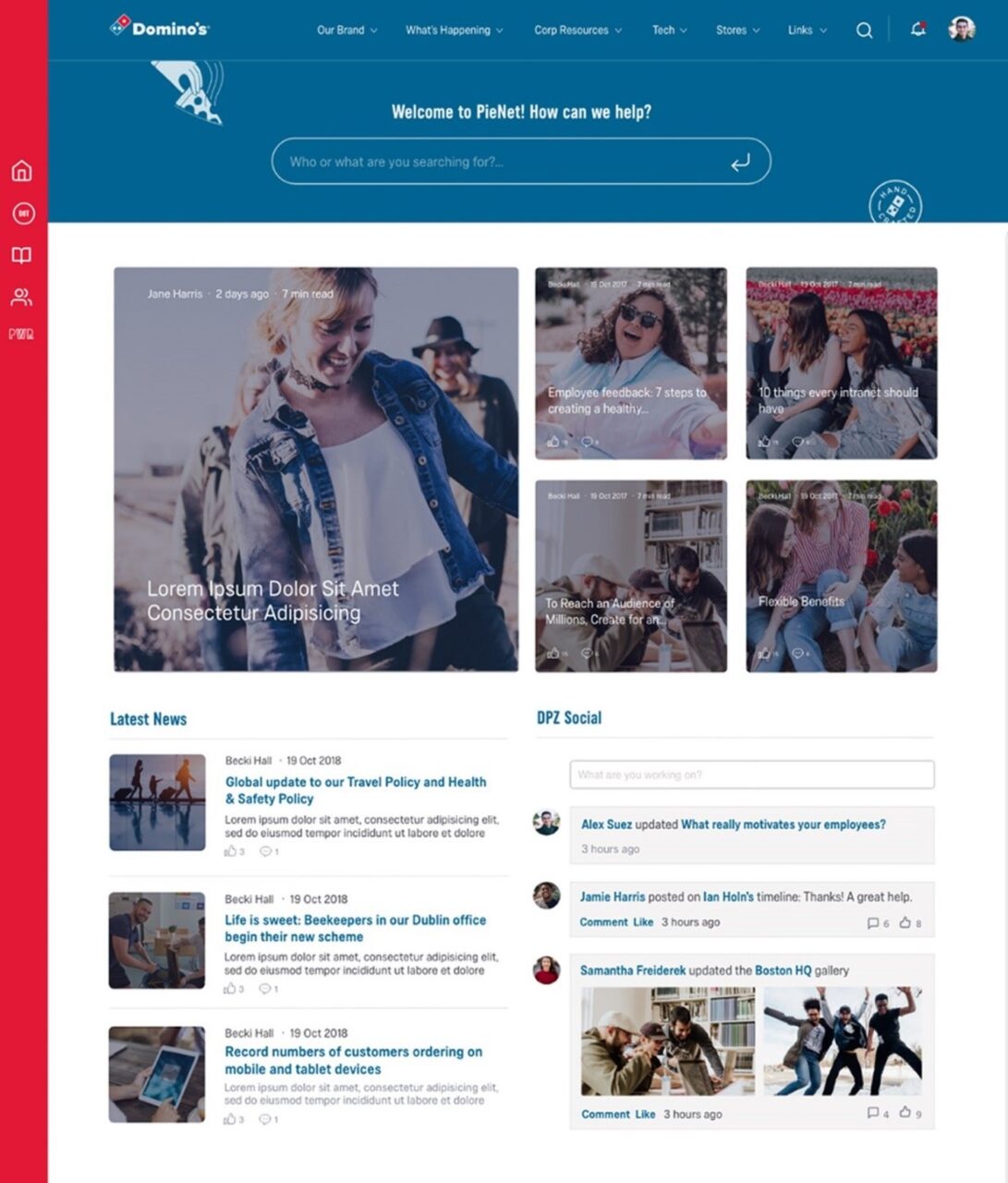
Digital personalization pays
If you work in marketing, you probably know about the value of personalization already. And there are some strong arguments to back it up:
- Personalized call-to-actions perform 202% better than basic ones
- Organizations that personalize their web experiences see a 19% uplift in sales on average
- Personalized emails deliver six times higher transaction rates than generic emails
Internal communication has been slower to embrace the same strategies, but as new technologies arrive, the gap is narrowing.
Personalized, timely, and relevant messages will deliver measurable returns on employee engagement and help to further create a company where people feel valued.

